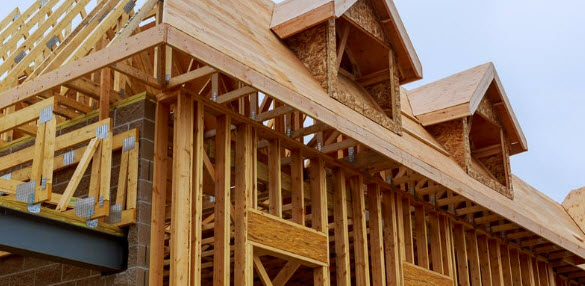A Home Equity Line of Credit (HELOC) offers homeowners a flexible way to access funds using the equity in their homes. Whether you’re looking to finance home improvements or consolidate debt, a HELOC can provide a revolving credit line at competitive interest rates. However, like any financial product, HELOCs have their advantages and drawbacks. This post will explore the pros and cons of HELOCs, with a focus on current HELOC rates, home equity line of credit rates, and what to consider when choosing the best home equity line of credit for your needs.
What is a Home Equity Line of Credit (HELOC)?
A HELOC is a revolving line of credit secured by your home. It allows you to borrow against your home’s equity and repay it over time, much like a credit card. The credit line is typically divided into two phases:
- Draw Period: During this period (usually 5-10 years), you can borrow funds as needed and make interest-only payments.
- Repayment Period: After the draw period ends, you enter the repayment phase (usually 10-20 years), where you’ll pay back the principal plus interest.
HELOCs generally come with variable interest rates, which fluctuate based on market conditions. This makes them a flexible but potentially volatile borrowing option.
Pros of a HELOC
1. Flexibility in Borrowing
One of the biggest benefits of a HELOC is its flexibility. You can borrow as much or as little as you need, up to your credit limit, and only pay interest on the amount you use. This makes it a great option for ongoing expenses like home renovations or emergencies.
2. Lower Interest Rates
Home equity line of credit rates are typically lower than unsecured loans or credit cards because the loan is secured by your home. Current HELOC rates are generally competitive, ranging between 5% and 9% depending on your credit score and loan-to-value ratio (LTV).
3. Interest-Only Payments During Draw Period
During the draw period, you can opt to make interest-only payments, which can keep your monthly payments lower. This feature is ideal if you need short-term financial relief and expect your income to increase in the future.
4. Tax Deductibility
If you use your HELOC for home improvements, the interest paid may be tax-deductible. However, you should consult with a tax advisor to see if you qualify for this deduction under current tax laws.
5. Large Credit Limit
Since HELOCs are based on the equity in your home, they often allow for larger credit limits than personal loans or credit cards. This makes them useful for significant expenses such as medical bills, tuition, or debt consolidation.
Cons of a HELOC
1. Variable Interest Rates
Most HELOCs come with variable interest rates, meaning your payments could increase over time. While current HELOC rates might be low, market fluctuations could lead to higher rates during your repayment period.
2. Risk of Losing Your Home
Since a HELOC is secured by your home, failing to make payments puts your home at risk of foreclosure. It’s crucial to ensure you can comfortably afford payments before taking out a HELOC.
3. Potential for Over-Borrowing
Because of the flexible nature of a HELOC, some borrowers may be tempted to over-borrow. This can lead to long-term debt issues, especially if you’re only making interest payments during the draw period.
4. Closing Costs and Fees
Like a mortgage, HELOCs often come with closing costs, which can range from 2% to 5% of the credit limit. There may also be annual fees or early closure fees depending on the lender, adding to the total cost of borrowing.
5. Uncertain Repayment Terms
Once the draw period ends, you’ll enter the repayment phase, where you must pay back both the principal and interest. This can lead to higher payments than you’re accustomed to, especially if interest rates rise.
Explore HELOC rates using your Home Wealth Blueprint, crafted with real-time property data from Home Loan Advisor. Get personalized mortgage options and home wealth strategies that align with your financial profile.
Current HELOC Rates
Current HELOC rates can vary depending on factors like credit score, loan-to-value ratio, and the lender. Here’s a general look at the current range of home equity line of credit rates:
Credit Score Range | HELOC Rates |
740+ | 5.0% – 6.5% |
680 – 739 | 6.5% – 7.5% |
620 – 679 | 7.5% – 9.0% |
Below 620 | 9.0% and above |
As you can see, borrowers with higher credit scores tend to secure lower rates. Always shop around for the best home equity line of credit rates and terms.
Pros and Cons Summary
Pros | Cons |
Flexible borrowing with revolving credit | Variable interest rates can increase costs |
Lower interest rates than credit cards | Risk of foreclosure if you miss payments |
Interest-only payments during draw period | Over-borrowing can lead to debt problems |
Tax deductibility for home improvements | Closing costs and fees can be high |
Large credit limit based on home equity | Higher payments during repayment phase |
FAQs
- What is the difference between a HELOC and a home equity loan?
A HELOC is a revolving credit line with variable interest rates, while a home equity loan provides a lump sum with fixed rates. - What are current HELOC rates?
Current HELOC rates generally range from 5% to 9%, depending on factors like credit score and loan-to-value ratio. - Can I lose my home if I default on a HELOC?
Yes, since a HELOC is secured by your home, missing payments could result in foreclosure. - How much can I borrow with a HELOC?
Lenders typically allow you to borrow up to 85% of your home’s value, minus what you owe on your mortgage. - Are there fees associated with a HELOC?
Yes, HELOCs often have closing costs, annual fees, and potential early closure fees. - Can I use a HELOC for anything?
Yes, you can use a HELOC for various purposes, including home improvements, debt consolidation, or large purchases. - What happens after the draw period?
Once the draw period ends, you’ll enter the repayment phase, where you must repay both the principal and interest. - Can I refinance a HELOC?
Yes, you can refinance a HELOC, but be aware of any fees and potential changes to your interest rates. - Is interest on a HELOC tax-deductible?
The interest may be tax-deductible if the funds are used for home improvements. Consult a tax advisor for details. - What’s the best HELOC for me?
The best home equity line of credit depends on your financial needs, credit score, and the lender’s terms. Always compare offers to find the right fit.
Conclusion
A Home Equity Line of Credit (HELOC) offers flexibility and access to significant funds at competitive rates, making it a valuable financial tool for homeowners. However, variable rates and the risk of losing your home require careful consideration. Be sure to evaluate the current HELOC rates, compare lenders, and ensure a HELOC aligns with your financial situation before committing.



